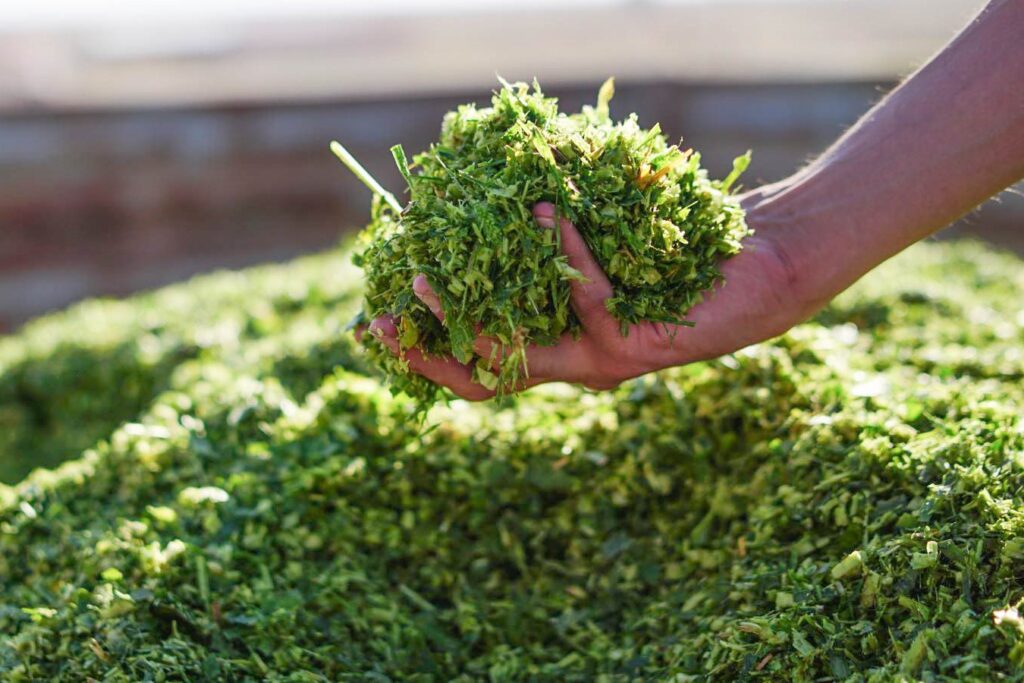Make the most of feed inputs with regular forage analysis
11th August 2023
Understanding forage quality will be key to making the most of this year’s silage stocks, and farmers will need to think carefully about balancing diets with appropriate supplements to increase forage intakes and digestibility in the rumen, advised Dr Liz Homer of Trouw Nutrition.
While forage stocks appear to be abundant this year due to above-average grass growth, a higher fibre content and lower digestibility of first and second cut silage may limit dry matter intakes, requiring precise supplementation to maintain performance, said Trouw Nutrition ruminant technical development manager Dr Liz Homer.
Explaining the effects of recent weather on maize crops, she said: “While crops in the field look strong, the lack of sunshine could have implications for cob development and starch content. So understanding forage quality is going to be key.”
According to an analysis of over 1800 first cuts and 500 second cuts, conducted at Trouw Nutrition GB’s laboratory in Ashbourne, dry matter content is looking good in forage harvested so far.
The results show metabolisable energy is averaging over 11MJ/kgDM, with crude protein over 14%DM. However, NDF and lignin contents are also high, which will affect forage digestibility and intakes.
“Although the headline figures are good, overall we are looking at more fibrous and less digestible forages with lower rumen fermentable carbohydrate and protein,” Dr Homer explained.
“This means silages will need careful balancing to keep the rumen fired up to digest the higher fibre, increase forage intakes and make the most of silage stocks.”
She went on to remind farmers that averages are only a guide and stressed the importance of analysing clamps regularly throughout the season so diets can be fine-tuned accordingly.
She also pointed out that most clamps will contain highly variable forage made up of different cuts comprising different swards, harvested at different times of the year in varying conditions.
To account for this variability, she advised analysing clamps at least monthly. “This will allow better-informed decisions to be made about supplementation to optimise the contribution from forage and income over feed costs,” she said.
“Hopefully, farmers will have good forage stocks and with regular analysis will be able to make the most of their investment in forage,” Dr Homer concluded.

